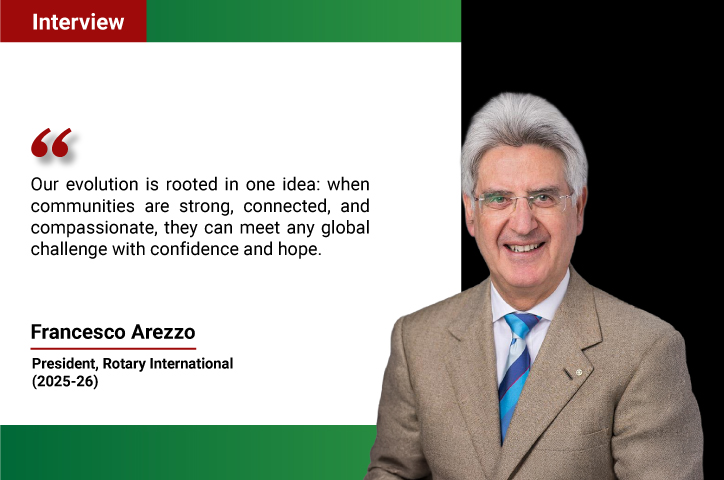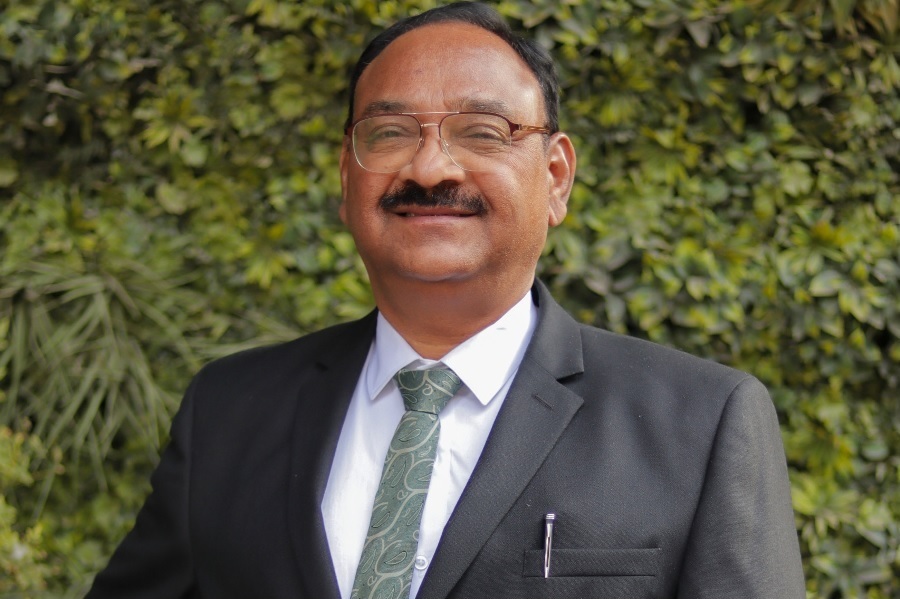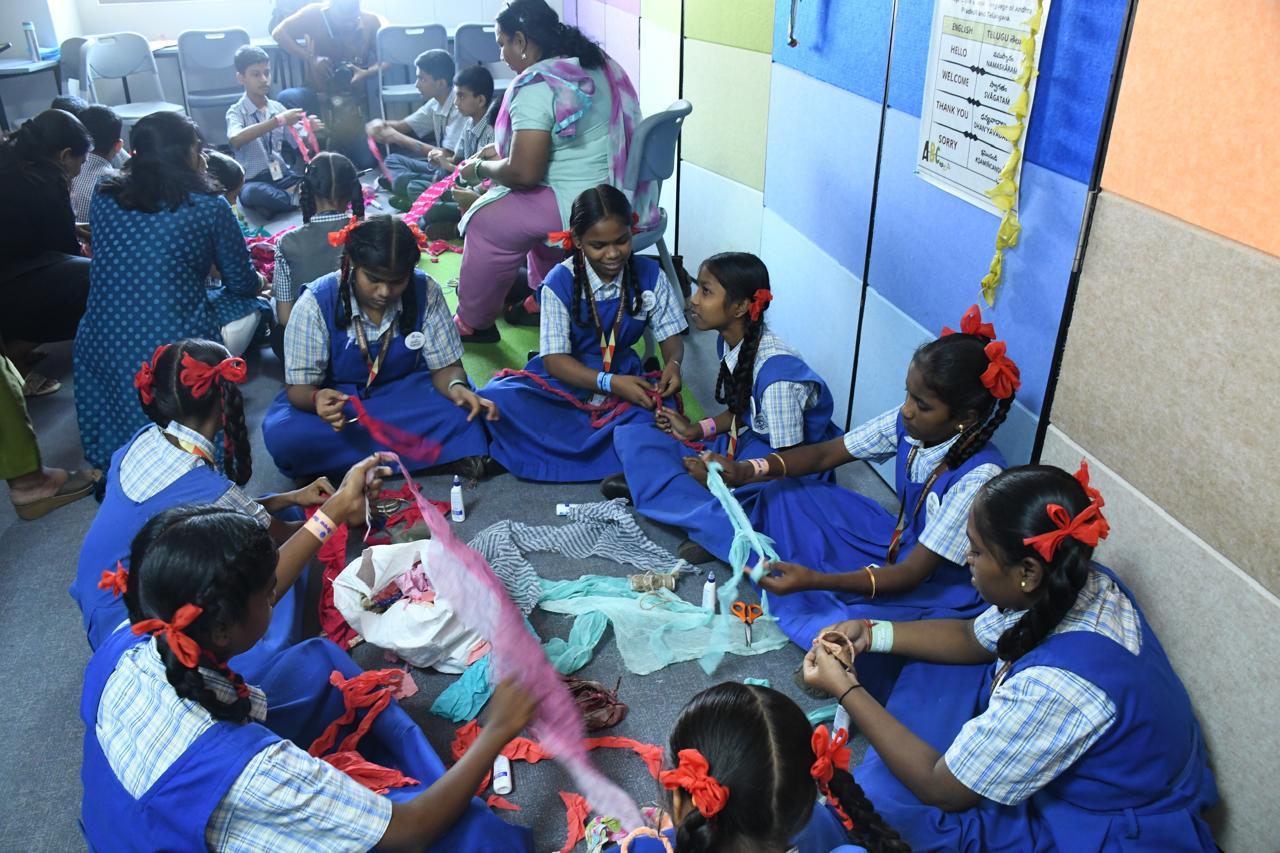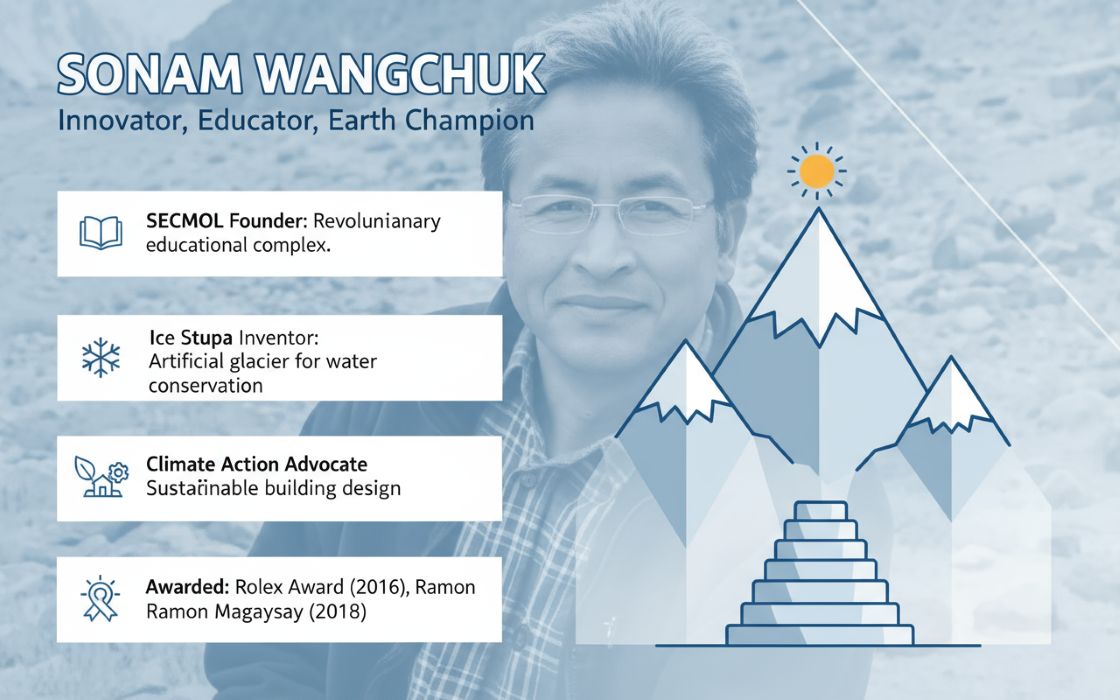For decades, the chemical industry was seen as being on the fringe of sustainability conversations vital to progress, but rarely at the forefront of environmental responsibility. Today, that has changed. As global priorities shift toward climate action, circularity, and responsible consumption, chemical companies are reimagining their role—embedding sustainability into every aspect of their operations, from product design and manufacturing to partnerships and supply chains.
In this exclusive conversation with TheCSRUniverse, Mr. Dixit Parmar, Global Head of Sustainable Solutions at The Lubrizol Corporation, shares how the company is leading this transformation through its structured framework of Climate, Conservation, and Circularity. He discusses how Lubrizol’s innovations—from bio-based polymers and EV fluids to water-saving CPVC systems—are driving measurable impact across industries.
The interview also explores how Lubrizol is using AI, IoT, and automation to enhance efficiency, reduce emissions, and ensure carbon accountability across its global operations. With bio-based alternatives identified for most materials and a 16% reduction in Scope 1 and 2 emissions since 2018, Lubrizol demonstrates that sustainability and growth can go hand in hand.
Read the full interview here:
Q. The chemical industry has traditionally been seen as resource-heavy. How do you see its role evolving in today’s sustainability-conscious world?
A. The chemical industry is referred to as the “Mother of All Industries’ and has truly been a success story of modern life. However, it is also considered energy-intensive, contributing ~6% of global CO2 emissions and has a high fossil-feedstock dependence. This puts the industry at a pivotal point of navigating how it can minimise environmental impacts whilst continuing to enable the necessary sustainable material and technology innovation. Chemical companies have made significant progress minimising emissions through more efficient manufacturing, reuse of waste, heat and recycling solvents. However, the industry will need to continue to go further to meet their goals.
Sustainability has been part of the chemistry of Lubrizol since we were founded in 1928, and it will continue to be as we define our future. At Lubrizol, we understand our environmental footprint in great detail and from this have set ourselves targets to minimize it whilst still operating our business in a safe and responsible manner. Additionally, we recognise that our products have a meaningful positive impact in the industries we serve. Pairing the two together, our holistic approach strives to ensure we lower our footprint whilst still meeting the sustainability demands of our customers and ultimately the consumers who use our products every day.
Q. Lubrizol has structured its sustainable solutions strategy around Climate, Conservation, and Circularity. Could you walk us through this framework and how it translates into real action?
A. Our Sustainable Solutions strategy ensures that as our innovation teams develop new products, sustainability principles are embedded from the outset to ensure we continue to deliver sustainable attributes and impacts for our customers. For that purpose, we have developed a Sustainable Solutions Criteria that helps evaluate the benefits and risks of our latest innovations. We categorize the sustainability impacts into three categories:
-
Reducing Climate Impact
- Innovations that reduce climate impact due to having a lower carbon footprint, improving energy efficiency, reducing GHG emissions of vehicles or enabling electrification.
-
Enhance Resource Conservation and Efficiency
- Innovations that reduce non-CO2 pollutants, enable the production of renewable energy, reduction of marine contaminants or avoiding deforestation risks.
-
Empowering Circularity
- Innovations that use renewable, recycled or non-virgin materials, enhance durability, enable recyclability and biodegrade naturally.
Some examples of our Sustainable Solutions are:
- Carbopol® BioSense Polymer: A bio based and readily biodegradable rheology modifier & sensory enhancer for the personal care market
- SulfrZolTM 54: Enabling the production of renewable fuels such as Sustainable Aviation Fuel (SAF) and renewable diesel
- Estane® ECO TPU: All the flexibility and durability of traditional TPU (thermoplastic polyurethane) using a bio-based renewably-sourced material
Q. Designing for sustainability is becoming a cross-industry priority. How is Lubrizol embedding sustainability into both product innovation and process design?
A. Designing sustainable products is a cross-industry challenge where support is needed from all actors in the value chain. Partnerships are key to success. At Lubrizol we are pushing a sustainability mindset to the very early stages of our development cycle to ensure it becomes embedded in the design from the start. In 2025, our target is to assess 100% of our Corporate Innovation projects using our Sustainable Solutions Criteria.
In addition to our Sustainable Solutions Criteria, we have been developing our expertise in Life Cycle Analysis (LCAs) and Product Carbon Footprints (PCFs). We have been using this to better understand the impacts of the products we manufacture today. For this, we have recently developed an in-house PCF tool which can calculate the footprints of ~7000 products within a few minutes. This serves as an excellent resource to respond to ever-increasing requests from our customers to understand the footprints of the materials they purchase. It also helps us to work with our customers to identify the hotspots of emissions and develop roadmaps on how we can lower the impacts.
Q. One of your key impact areas is ensuring safe water for tomorrow. Could you tell us more about how Lubrizol’s CPVC piping systems are enabling water conservation in India’s residential and infrastructure sectors?
A. Lubrizol’s FlowGuard® CPVC piping systems are engineered for durability, leak resistance, and minimal maintenance, ensuring safe and efficient water transport. In India, these systems are widely adopted in residential and commercial projects, helping reduce water loss from leaks and corrosion. Our CPVC technology also supports rainwater harvesting and greywater reuse, contributing to water conservation efforts critical for India’s future water security.
Q. With India pushing for cleaner mobility, how are Lubrizol’s products supporting EVs and alternative fuel technologies in practical terms?
A. Lubrizol has developed its own brand of e-fluids known as EVOGEN, which is backed by the industry-renowned research, testing and proven-performance that has been the backbone of our traditional technologies. The EVOGEN product range offers advanced lubricant and thermal management solutions tailored specifically to electrified vehicles (EVs). Our additive packages are specifically designed for the unique lubricating and cooling challenges these new vehicles pose. Our driveline e-fluid technologies, for example, are custom-designed to precisely meet the requirements of OEM electric drivetrains. They offer better protection, enhanced efficiency and overall better performance. Looking forward, our development teams are also assessing the demands of alternative fuel technologies and what requirements the next generation of fluids may need.
Q. Technology is often the backbone of sustainability. How is Lubrizol leveraging AI, IoT, and automation to make traditionally resource-intensive operations more efficient and low-impact?
A. Lubrizol is leveraging AI-driven analytics across our R&D and manufacturing operations to enhance energy efficiency, enable predictive maintenance, and minimize waste at our production facilities. One example is our Q.LIFE platform, a digital twin technology that creates a virtual model to simulate engine performance and internal friction over time. This innovative approach allows us to assess how various formulations of engine oils and fuel additives influence vehicle performance and longevity. By replacing physical testing and processes with virtual simulations, we gain deeper insights, increased efficiency and ultimately faster innovation.
Q.LIFE virtual testing also has a noticeable impact on sustainability. Engineers and product designers can test many formulations in a digital environment to truly identify the best formulations to proceed to physical engine trials. Not only does this enable better innovation, but it also significantly lowers the fuel consumption and therefore emissions associated with product development.
Another area of automation and sustainability for Lubrizol is the release of our new LCA tool, which is able to automatically calculate the product carbon footprint of any of ~7000 products that we manufacture. This provides us with great transparency into our emissions and helps us work with customers to make meaningful choices to positively impact sustainability.
Q. Carbon reduction is a critical metric. How did Lubrizol achieve a 16% cut in Scope 1 and 2 emissions in 2024, based on a 2018, and what’s the roadmap ahead for further decarbonization?
A. Lubrizol understands it’s carbon emissions in detail and we calculate our Scope 1, 2 and upstream Scope 3 on an annual basis. Scope 1 and 2 are transparently reported along with other environmental metrics. At the end of 2024, Lubrizol achieved a 16% reduction in Scope 1 and 2 carbon emissions, compared to its 2018 baseline, marking a significant milestone in its sustainability journey. Lubrizol has sites all around the world and each site is unique in how its operations contribute to its emissions. This reduction was achieved through a combination of several initiatives; each tailored to the specifics of the site and region. Example of large initiatives that have contributed include strategic consolidation and optimization of global assets, implementation of more efficient operations to consume less natural gas and steam, and electrification of our vent stream destruction. Additionally, we have also increased the number of sites that are using zero-carbon electricity.
Looking ahead, Lubrizol remains committed to further decarbonization through continuous improvements in operational efficiencies and the implementation of advanced technologies. We are looking into power purchase agreements for several sites to further lower their scope 2 emissions whilst continuing to focus on best-in-class manufacturing efficiency. We also recognise that we can’t achieve our goals alone. We have several partnerships with advanced technology companies that will help us further with our reduction efforts. By maintaining transparency and supporting innovation, we aim to build on our progress and play our role in ensuring we continue to manufacture in a safe and sustainable manner.
Q. Bio-based alternatives exist for some of the raw materials Lubrizol uses. How is this transition reshaping your supply chain, and what are the scalability prospects?
A. The chemical industry has historically—and continues to be—heavily reliant on fossil feedstocks as its primary source of carbon. However, in recent years, bio-based alternatives have rapidly grown for several key upstream intermediates. This is generally welcomed as it provides the industry with a potential sustainable choice. Lubrizol has an increasingly growing portfolio of bio-based raw materials in our products. However, caution must also be applied when considering bio-based feedstocks as there can be unwanted consequences such as competition with food or deforestation that occurs to meet demands. To that extent, typically, a much higher amount of work goes into validating a bio-supply for us to be able to use it in a responsible manner.
Innovation over the past years, within the area of bio-feedstocks, has resulted in a much-expanded range of bio-molecules being available on the market. However, they remain at a low level. The reasons for this are complex but include competition with fuels, higher price points and existing fossil assets. We need to work to unlock these opportunities and for the latter, chain of custody models such as biomass balance offers a credible solution and are a vital step in aiding the transition and supporting the scale up of the bio-economy.
Q. Finally, could you tell us how Lubrizol’s partnerships—whether with suppliers, industry peers, or customers—have enhanced your sustainability outcomes?
A. Collaboration is at the heart of Lubrizol’s sustainability strategy. We connect with a large variety of stakeholders both up and down the value chain to progress not only our sustainability targets but those of the wider industry too. One recent example of this is our partnership with Suzano—one of the world’s leading producers of renewable materials—to help bring a bio-based silicone-replacement to the market derived from Eucalyptus trees. Together, we co-developed Carbopol® Biosense™, which acts as a rheology modifier and a sensory enhancer providing exceptional performance whilst also being readily biodegradable. This partnership has allowed Lubrizol to offer a product to the market with a significantly improved environmental profile, reducing reliance on fossil-based ingredients and at the same time, providing a lower carbon footprint alternative to traditional silicones.
By working closely with Suzano, Lubrizol has been able to combine deep material science expertise with responsible sourcing practices, ensuring that Carbopol® Biosense™ meets both high performance standards and stringent sustainability criteria. This collaboration not only fosters innovation but also demonstrates how strategic alliances across the value chain can accelerate the adoption of sustainable solutions in the personal care industry. Ultimately, such partnerships enhance our ability to deliver on customer sustainability goals and contribute to a more sustainable future.
Q. How is Lubrizol promoting circular economy practices in India, and what lessons could the wider chemical industry take from these initiatives?
A. We have launched several initiatives at our sites and within our products to promote circularity and material reuse. For example, one of our facilities has invested in technology to achieve zero wastewater discharge by recycling 100% of what we generate. We have also implemented a rainwater harvesting system to reduce freshwater consumption. At the product level in India, we participate in Operation Clean Sweep, a program designed to prevent plastic spills from entering the environment. To support this, our CPVC plant is equipped with a centralized vacuum collection and high-efficiency air filtration system, improving dust management and workplace cleanliness while recycling collected materials back into production.
Our innovation teams are further developing products that facilitate easier recycling at end-of-life, demonstrating that Lubrizol’s sustainability impact extends beyond our facility gates. With several sites in India—and more planned—responsible growth is a priority. Supporting a circular economy is essential for the industry, and we recognize our responsibility. We actively engage stakeholders and provide educational seminars to help drive sustainability progress across the sector.
















.jpg)




